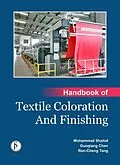A Handbook of MATLAB® Programming for Mechanical Engineers Following are the salient features of this text: Introduction to programming tools to solve engineering problems. Explanation of 2-D and 3-D plotting tool Programming to do differentiation and integration of transcendental equations. Programming to solve non-linear equations. Programming to do curve-fitting for experimental data. Programming to solve ordinary differential equations. Programming to solve partial differential equations. Introduction of 'petiole' GUI to solve elliptic partial differential equations. Typical problems from turbo machinery, fluid mechanics and heat transfer subjects are solved using the MATLAB programming tools. This text can be used as a supplementary material for the courses Numerical Methods for Engineers, Advanced Fluid Mechanics and Heat Transfer, Finite Element Methods, Modeling and Simulation of Thermal Systems and MATLAB programming Lab.MD Irfan Ali is a Lecturer in Thermal and Aerospace Engineering Program at Adama Science and Technology University, Ethiopia. He did his Masters in Energy Engineering from SRM University, India. His research includes study of solar-thermal systems, study of photo-catalysts, and study of Nano-fluids. He has authored a monograph Analysis of solar desalination plant at SRM University. He has contributed a book chapter on Thermal analysis of solar pond in Energy Science and Technology Vol. 5: Solar Engineering -1(Applications). He is deeply interested in the process of learning engineering education and has produced e-learning videos on various subjects with the collaboration of KOICA (Korea International Cooperation Agency) at Adama Science and Technology University. He won the best presentation award for his e-learning videos. .
Autorentext
Dr Mohammad Shahid received the master's degree in Chemistry from Shibli National College, Azamgarh (India) in 2006 and Ph.D. in Organic Chemistry from the Jamia Millia Islamia, New Delhi (India) in 2014 under the supervision of Dr Faqeer Mohammad. He is now a post doctoral researcher in Prof. Chen's research group at College of Textile and Clothing Engineering, Soochow University, China. Currently, his research focuses on the application of plant extracts and biotechnologies in textile dyeing and functional finishing. He also has research interests in the revival of historical dyeing techniques and development of analytical methods for textile cultural heritage studies.
Dr. Guoqiang Chen is a professor in College of Textile and Clothing Engineering at Soochow University (China). He received his PhD degree intextile chemistry and dyeing & finishing engineering from Donghua University (China). Since 1986, he taught textile chemistry at Soochow University, hepursues research and development on textile chemicals and functional textiles.He has published more than 250 papers. He has received several prizes (State Science and Technology Awards, Mulberry and Flax Prize of Hong Kong). He serves as Editor-In-Chief of Modern Silk Science and Technology as well as Vice President of the China Silk Association. His representative papers include: A hemicyaninefluorescent reactive cationic dye: synthesis and applications on wool fabrics, Color. Technol.; Novel transfer printing paper for silk printing with reactive dye, Mater. ; Preparation and properties of acryloyloxy carboxylic perfluorooctyl estercopolymer for liquid repellent finishing of cotton, Fiber. Polym.; Performance offlame retardant wool fabric grafted with vinyl phosphate, J. Eng. Fibers and Fabr. ; Synthesis and application properties of fluorinated aromatic copolymers, J. Appl. Polym.Sci.
